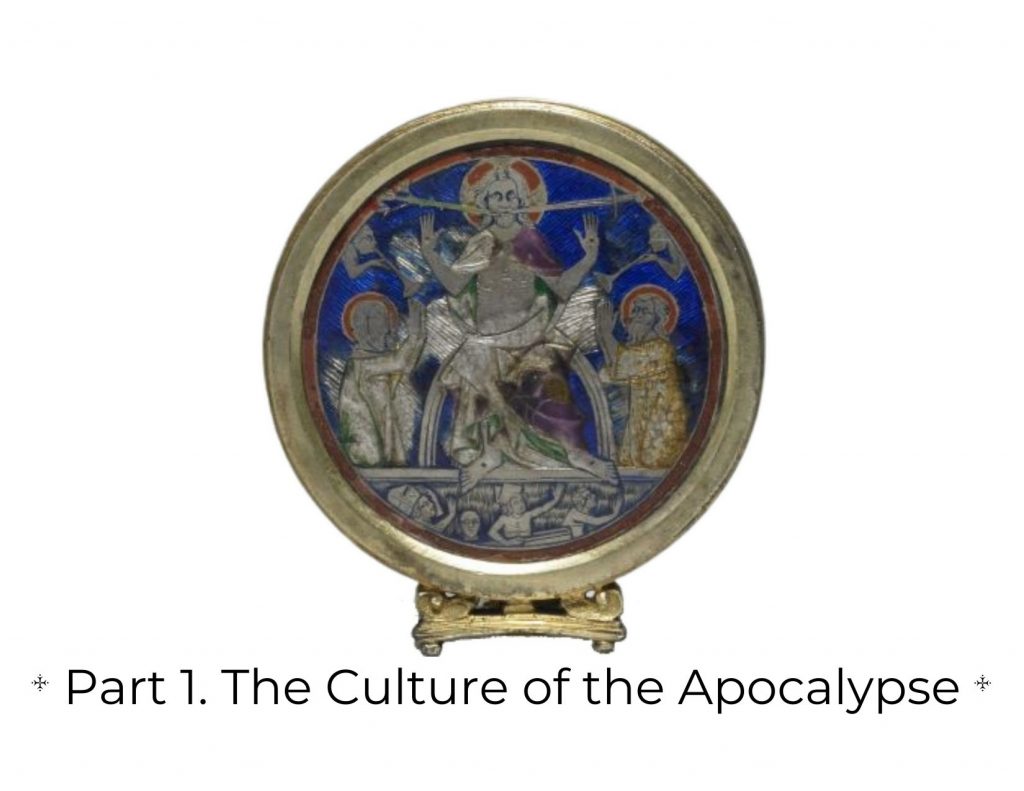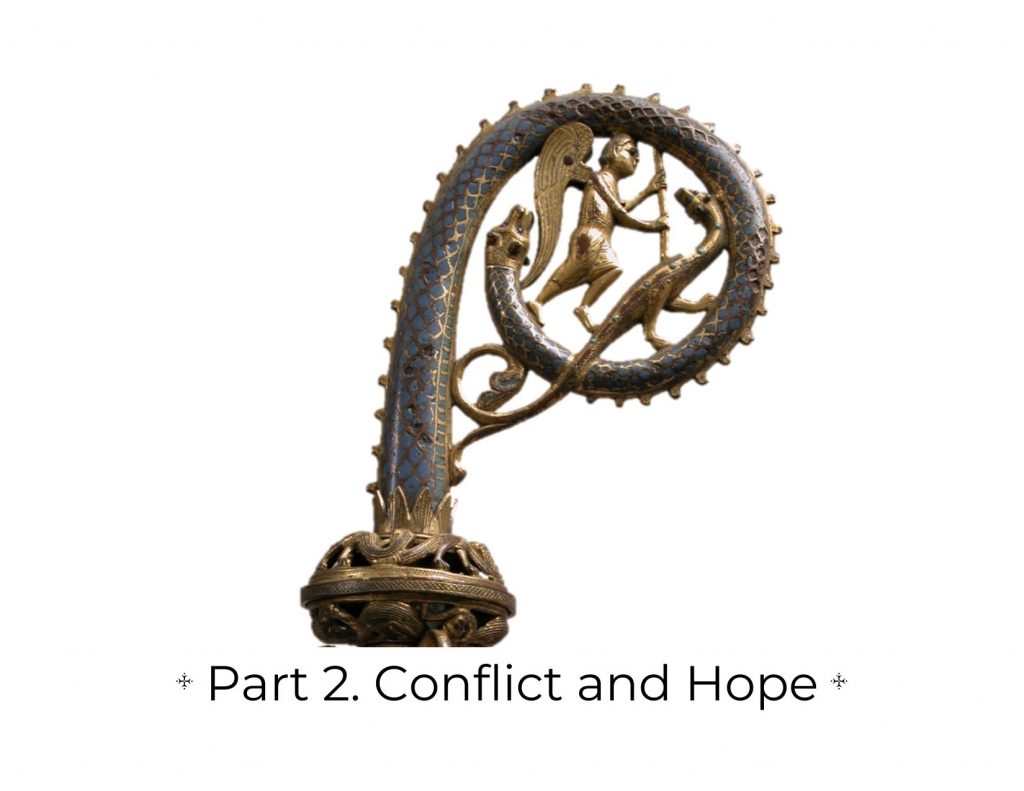On the remote Greek island of Patmos around the year 100 C.E., a man named John wrote down his enigmatic, otherworldly revelation (apocalypsis) predicting the end of time. Frightening beasts, dragons, and weapon-wielding horsemen bearing plagues and death are some of the Apocalypse’s grim characters who bring on calamitous punishments. Yet John’s revelation also features hopeful signs such as angels protecting the heavens from these dark forces. Ultimately, John’s Book of Revelation—also called the Apocalypse—wove together dramatic descriptions of the final days with an anticipation of eternal peace.
Theologians accepted the Book of Revelation as scripture in the fourth century C.E., inspiring subsequent painters, sculptors, and other artists to imagine what humanity’s fate might look like at the end of time. During the Middle Ages (roughly 400-1500 C.E.), artists joined with writers of textual commentaries to make sense of John’s mystifying yet captivating Apocalypse. This exhibit explores the quest for salvation and the fear of lasting condemnation in the Book of Revelation through medieval and Renaissance objects produced after about 1100 C.E. These artworks attest to both historic prophecies and the apocalypticism that shapes our imagination today.



